Chelsea Flower Show 2023
Researching, designing and making low-carbon materials and garden features for The Nurture Garden at RHS Chelsea Flower Show for Sarah Price Landscapes.
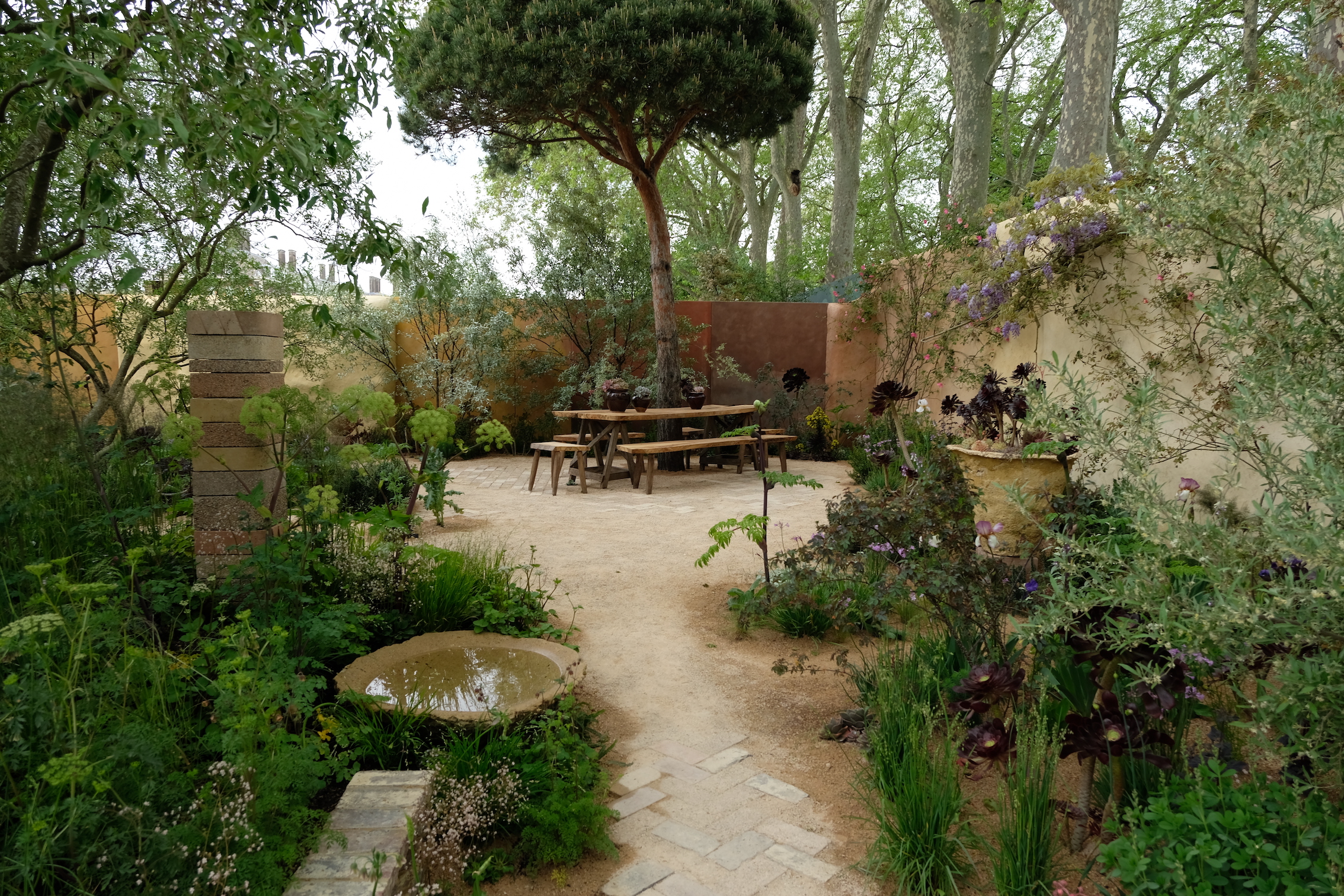
Building on a successful working relationship in projects at The Exchange and Maggie’s Southampton we were invited to join the team early on in the process of developing the show garden. Our role was to bring our knowledge and creative, hands-on approach to the use of sustainable materials, for a garden inspired by the paintings and horticultural craft of Cedric Morris, the former owner of Benton End in Suffolk.
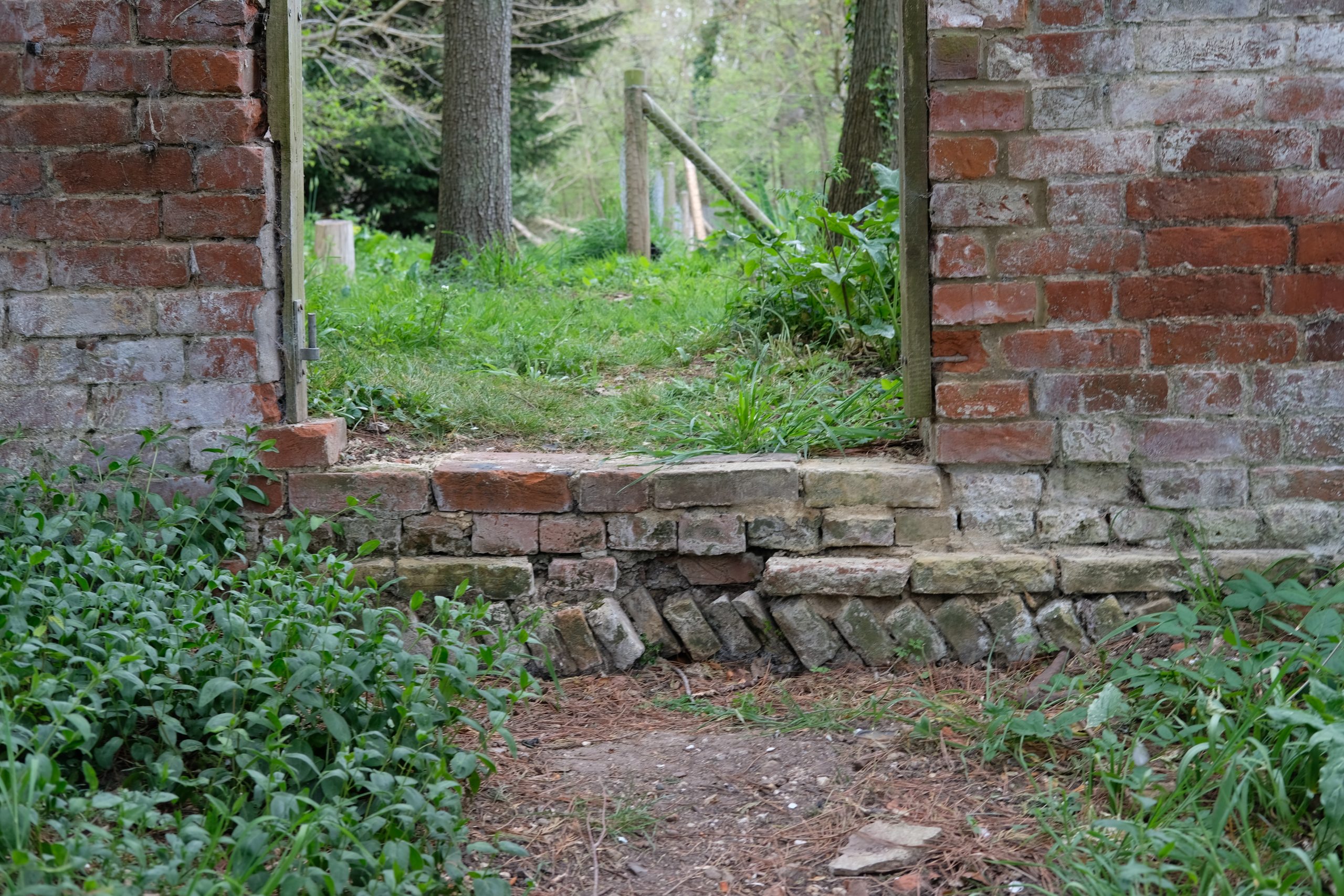
Our ethos for the project was to be transparent and thoughtful about the way materials are found and used in the temporary garden exhibition and to ensure that our approach was as sustainable as possible. We aimed to source materials and process them as close as possible to the assembly site at Crocus Nursery in Surrey, or along the transport corridor between the nursery and Chelsea. By testing and inventing new materials and methods, as well as drawing on older craft techniques, we were able to create a material palette of predominantly construction waste, or by-products from the landscape, and limit the extraction of virgin resources. We aimed to make all the processes involved in shaping the garden accessible to the everyday gardener – in scale, skills and tools required, and material choice.
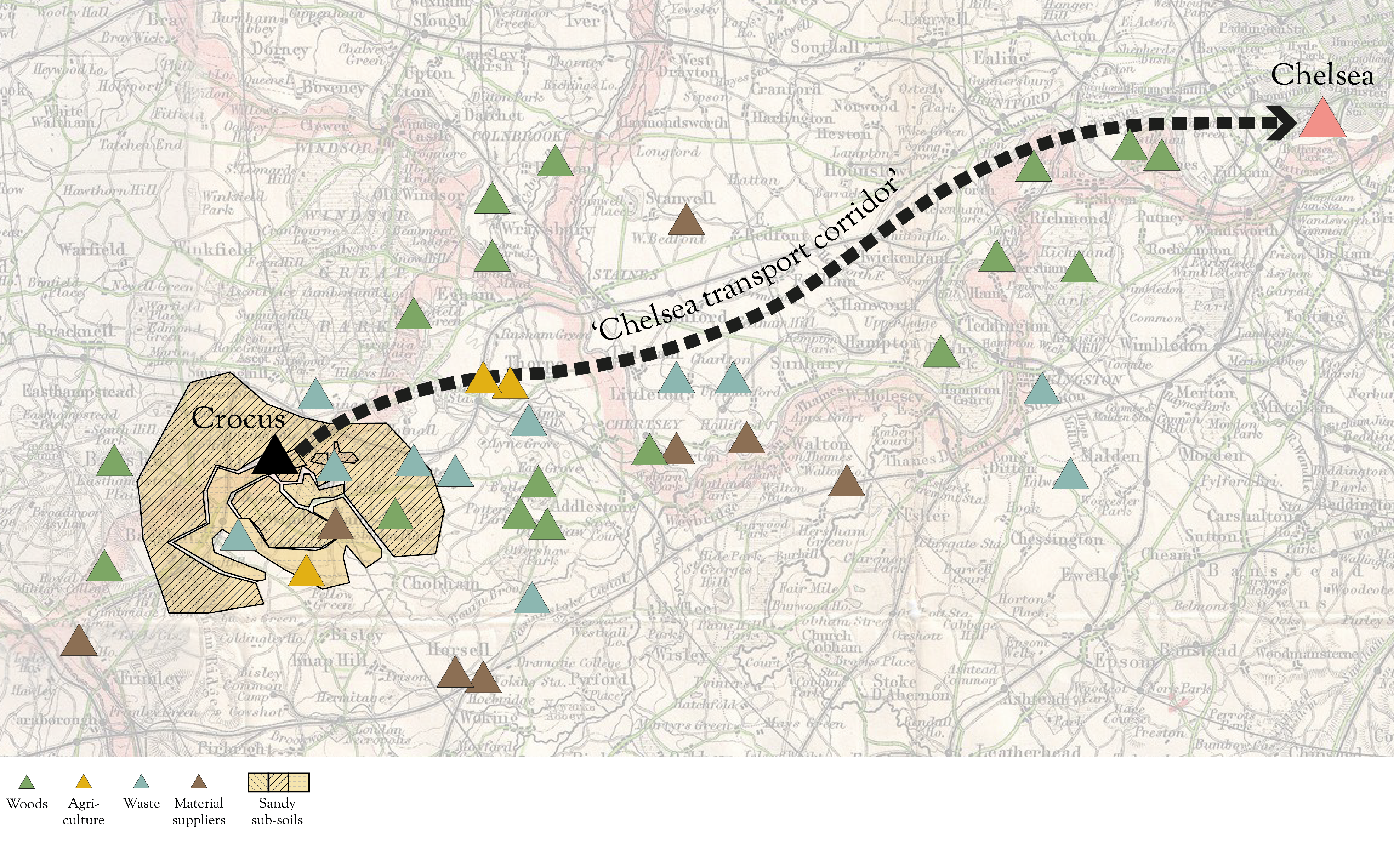
As part of our research we mapped potential materials and makers along the transport corridor between our assembly site and Chelsea showground, to determine the most viable materials, in terms of availability, infrastructure, and the lowest carbon options for construction.
We also looked at transferable building and landscape vernacular crafts around Benton End in Suffolk and researched specific crafts that could transform the low value available materials into something beautiful.
We developed a strategy to ensure material choices and production could be as sustainable and non-polluting as possible – including designing for deconstruction and onward reuse.
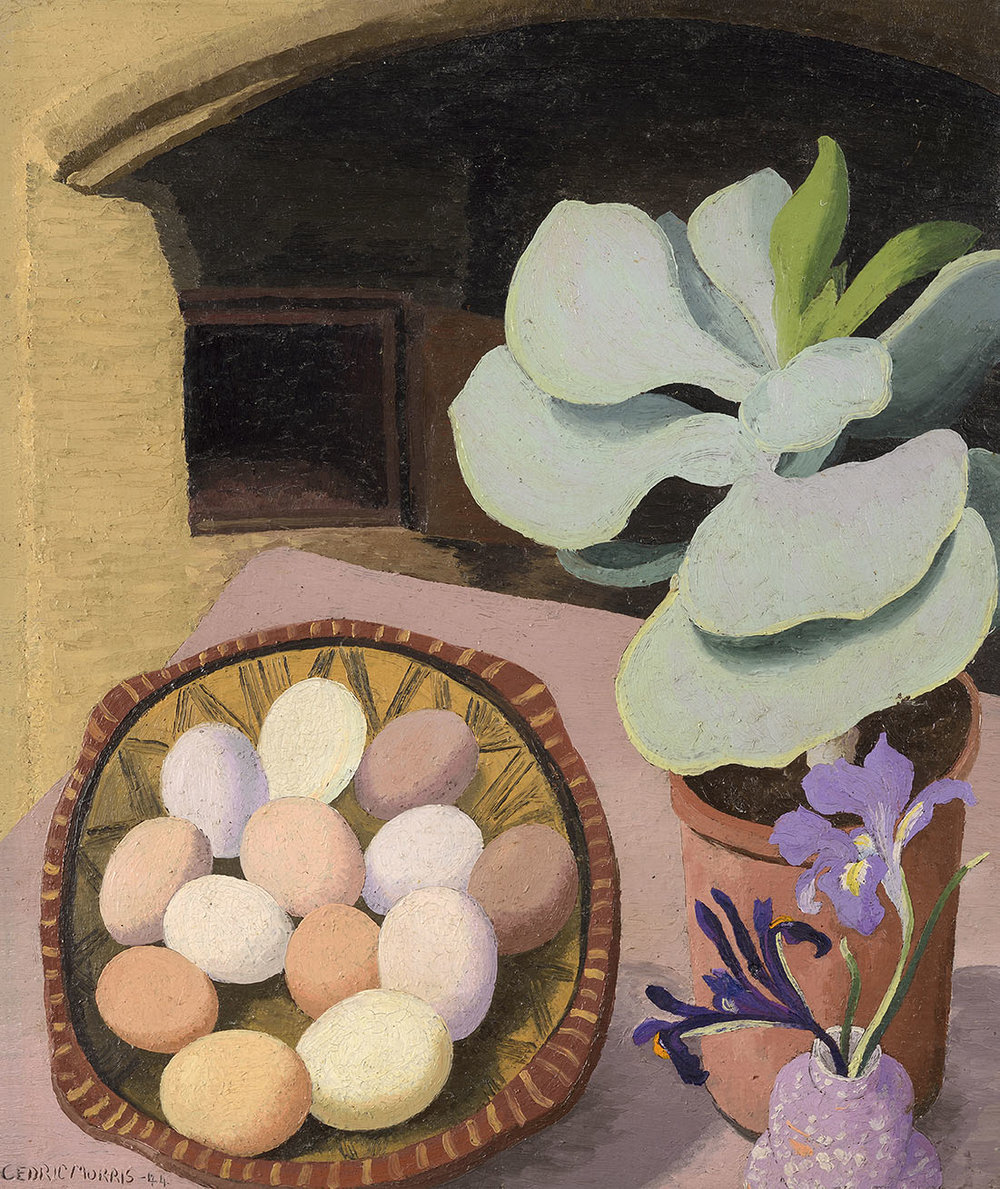
The boundary to the garden has the potential to have a large carbon footprint so we built lightweight screens made from waste construction timber and used calico collected from film studios along the ‘Chelsea corridor’. We developed a palette of natural paints using linseed oil and flour, matching the colours to Sarah’s vision for the garden, inspired by the paintings of Cedric Morris.
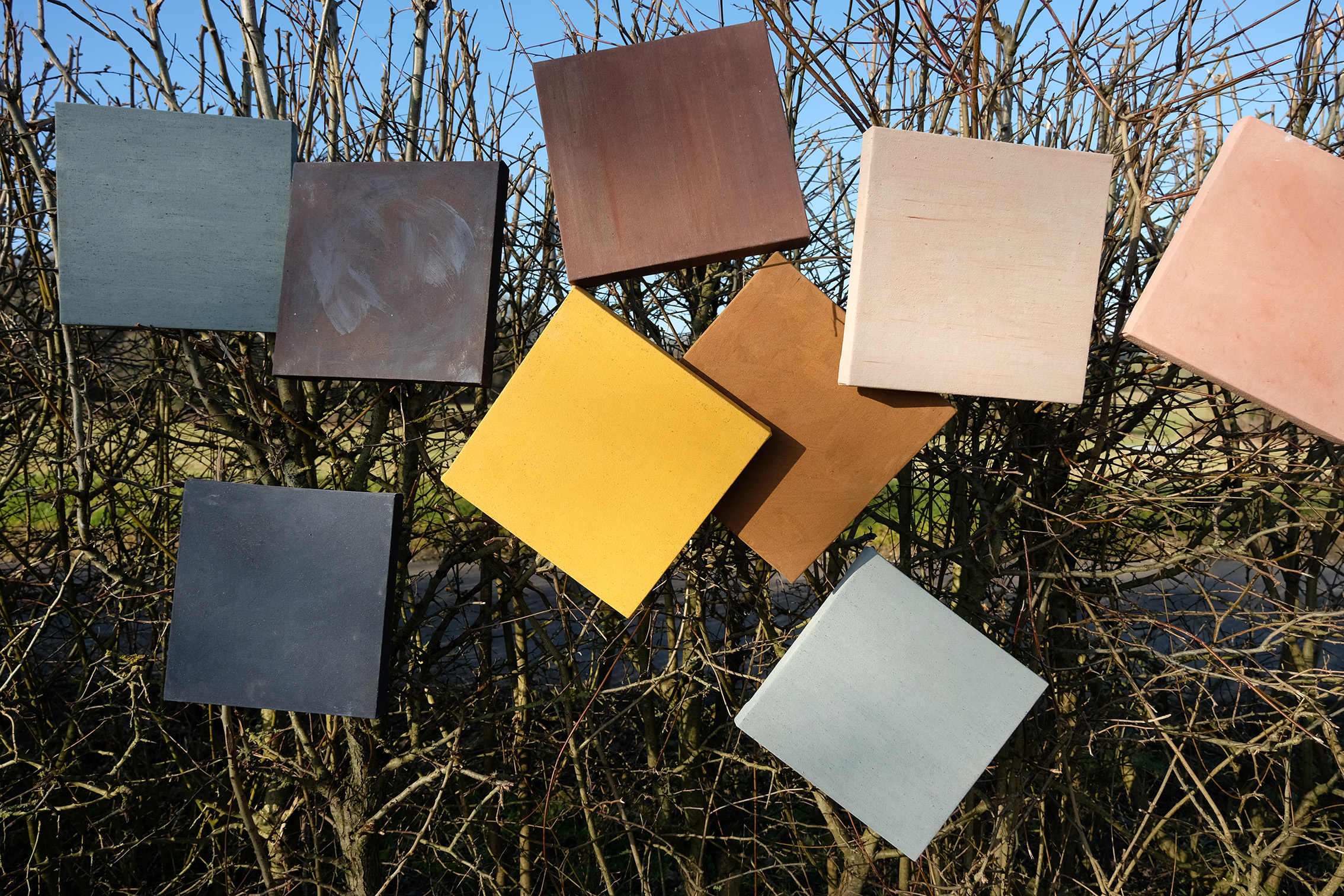
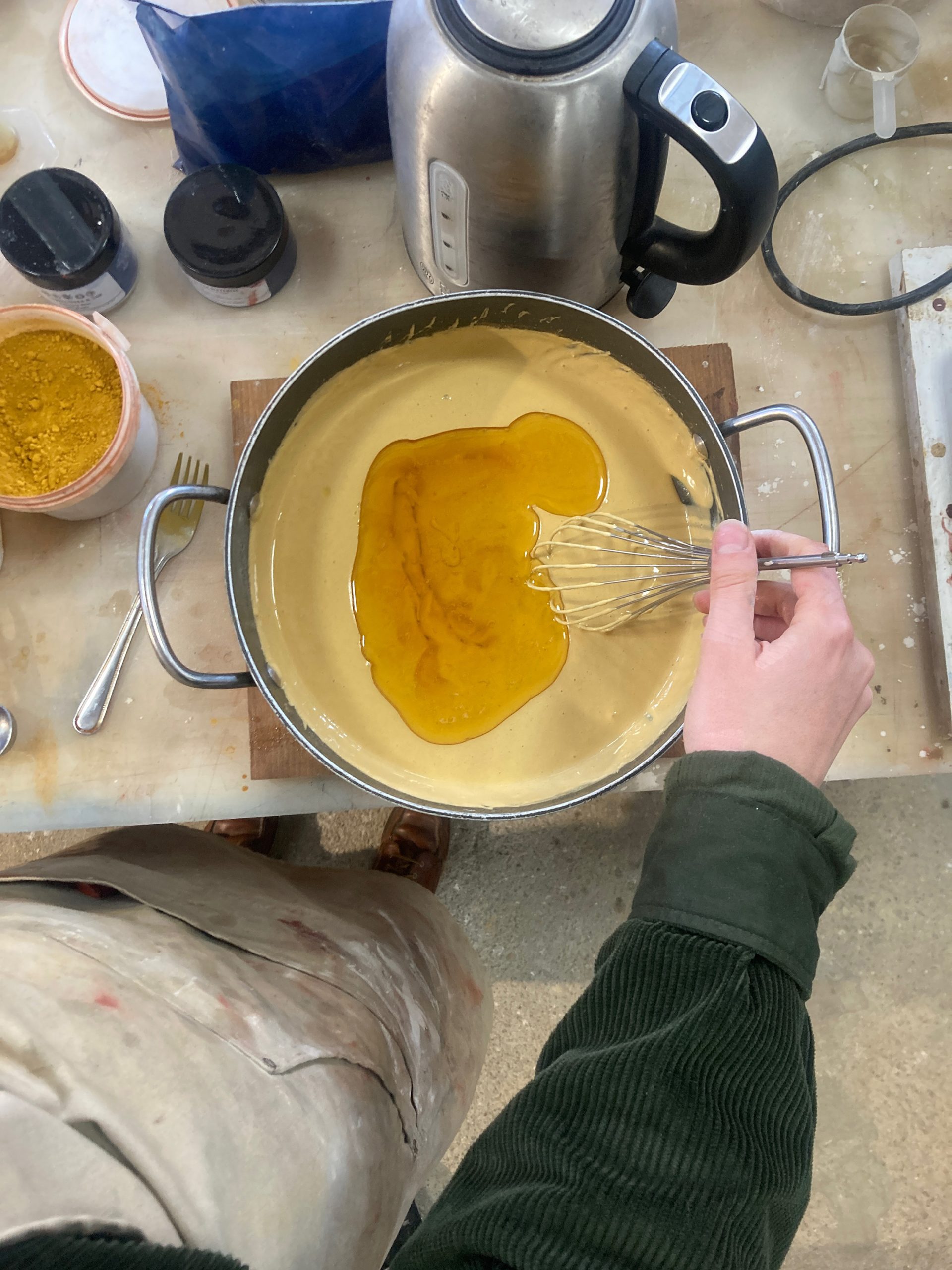
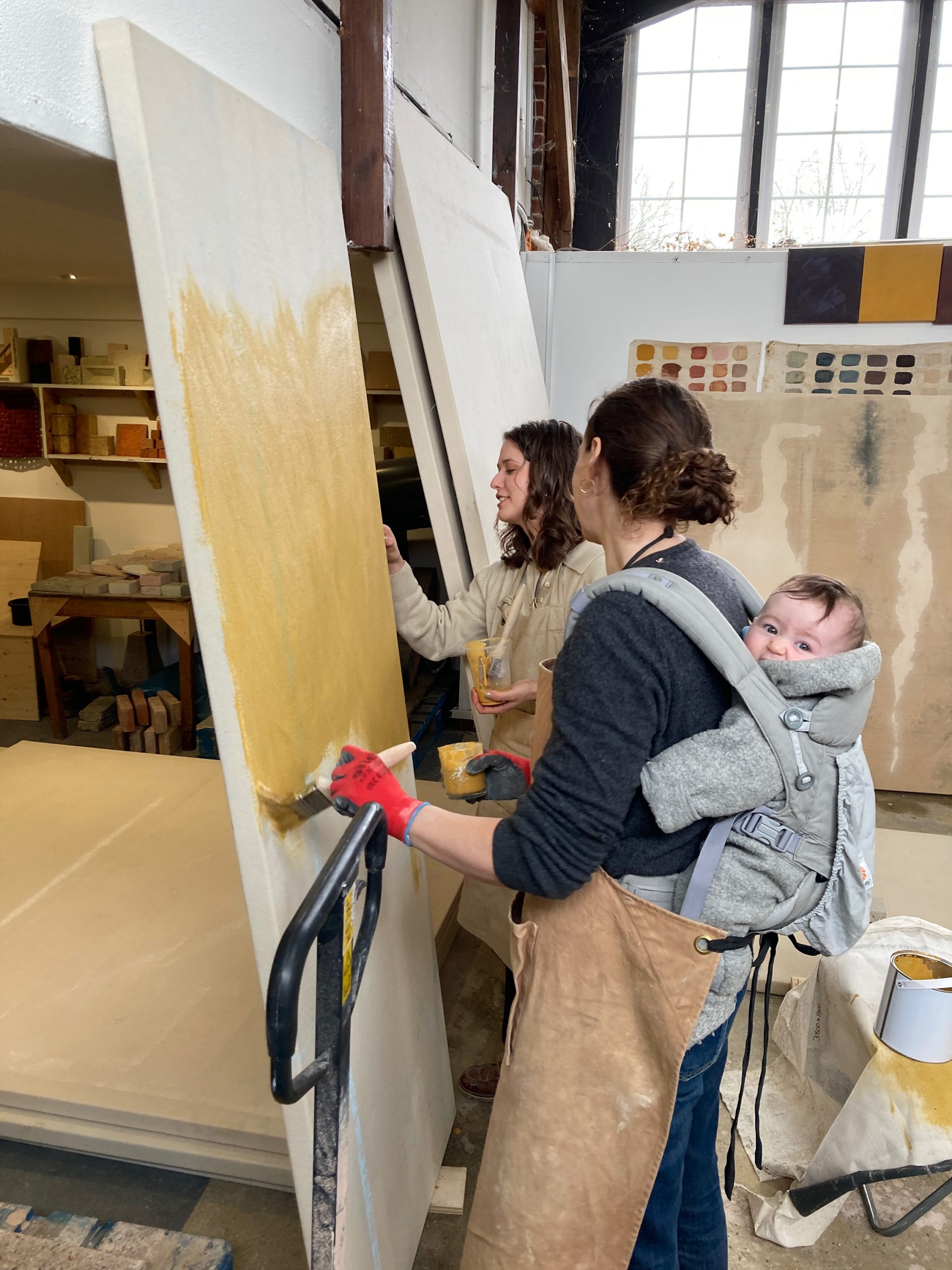
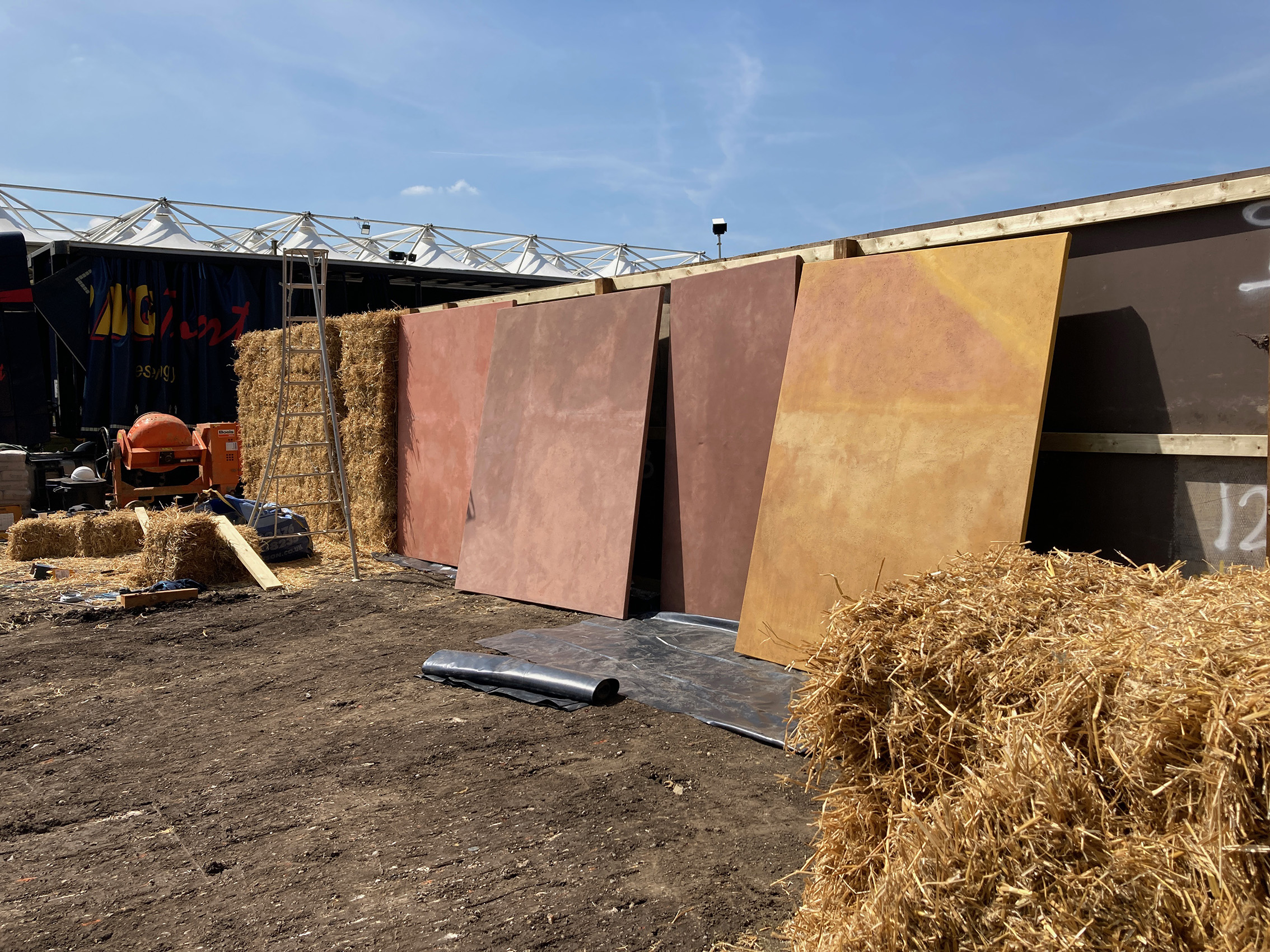
Inspired by sand casting techniques used in metal work, we designed prototype vessels to be cast into the ground as an experimental and accessible way for gardeners to potentially make their own large pots at home using waste materials. We made several cast-in-ground and profiled vessels for the garden and also trained contractors in their production and finishing.
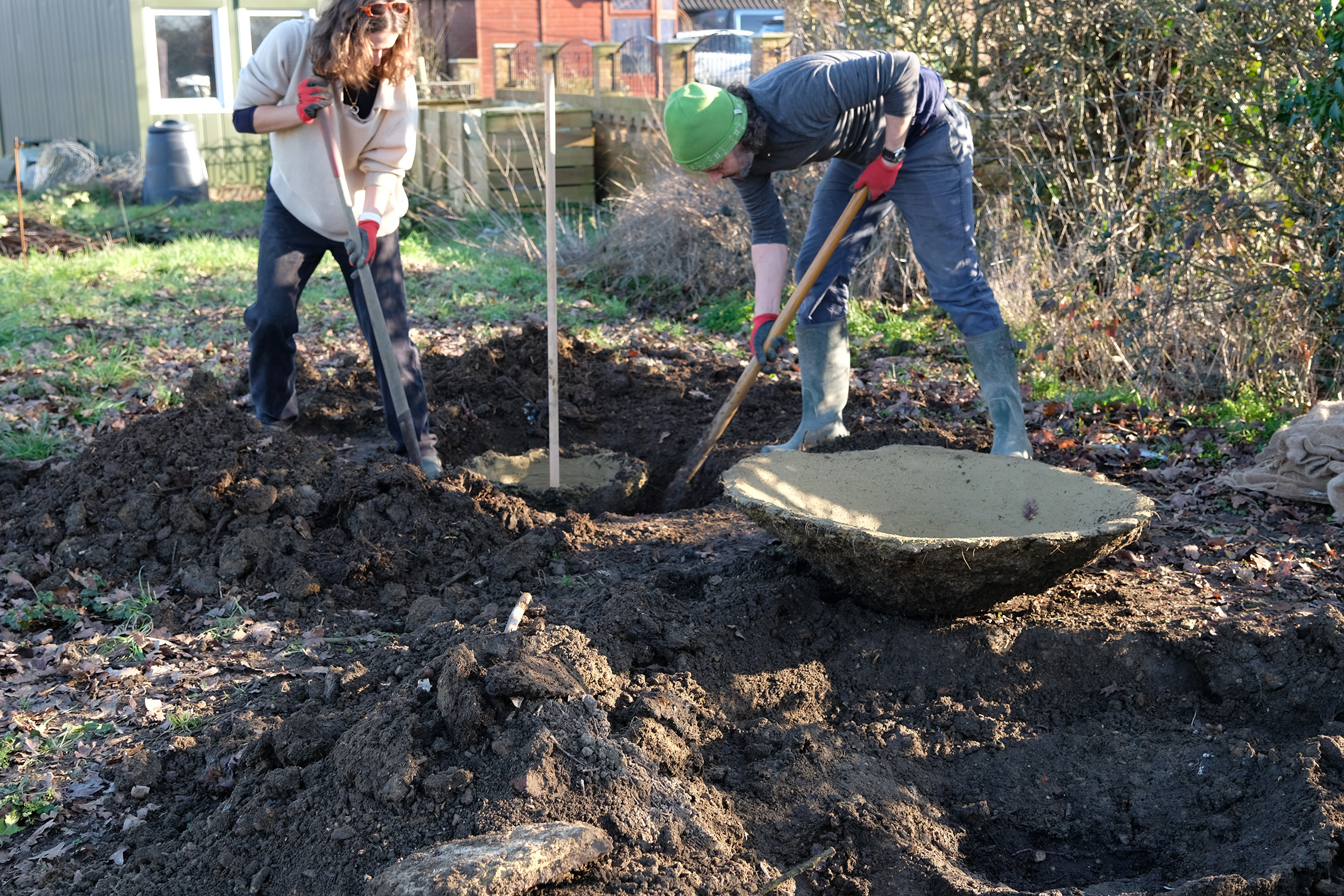

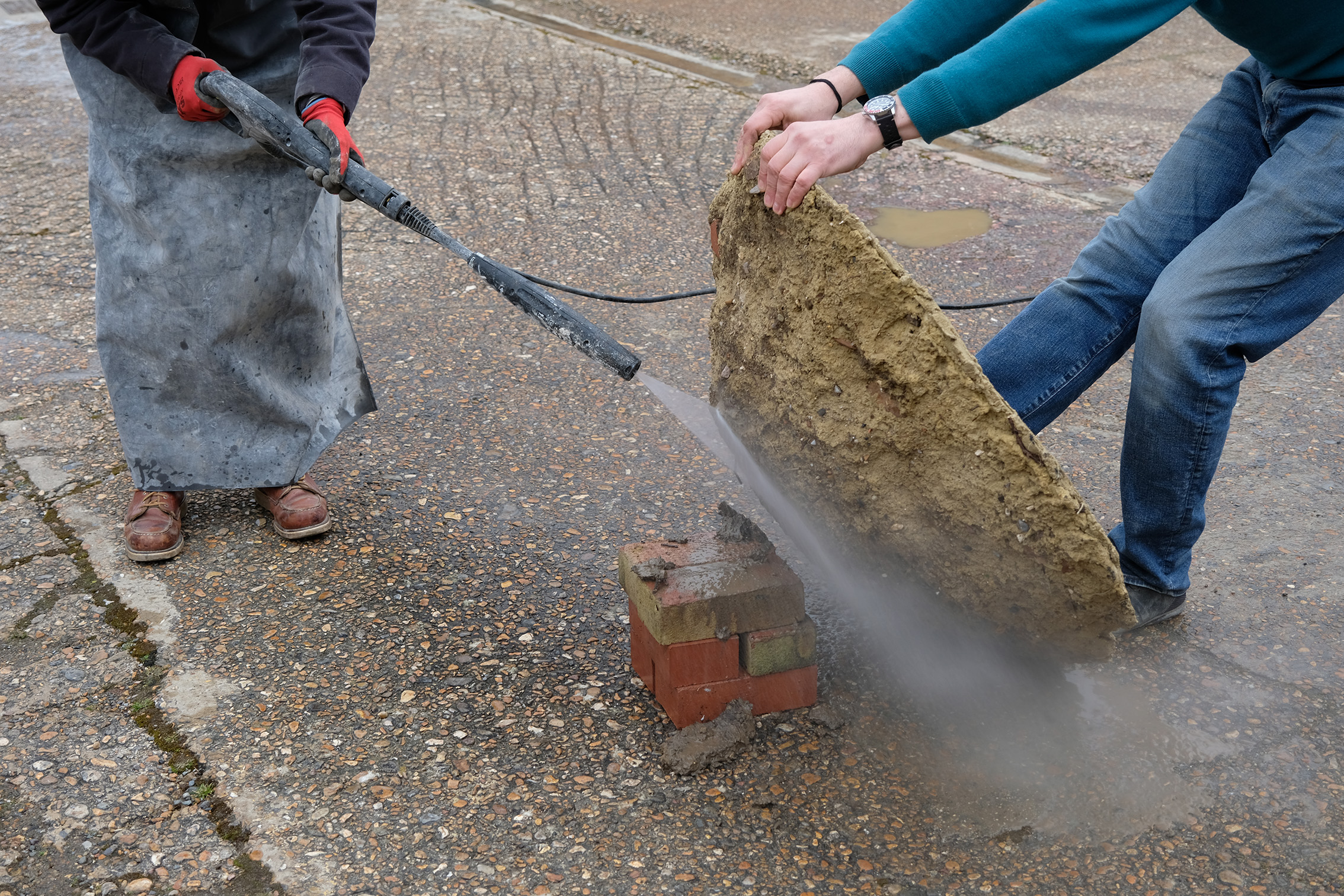

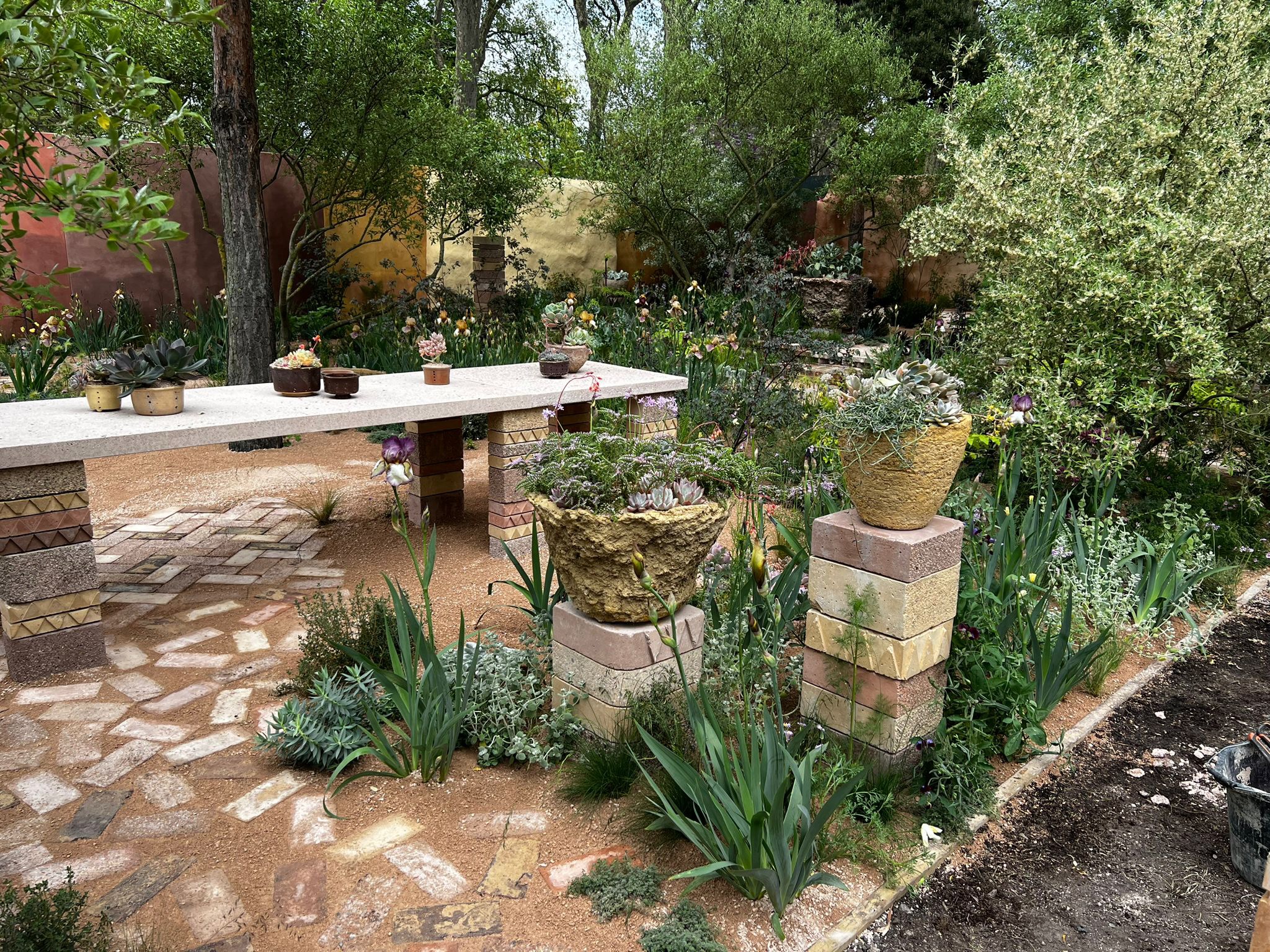
During our research we uncovered a little used agricultural waste stream from beer production – Hop bines and twine. Bines are usually shredded, once the hops are harvested, but we managed to source some from Bushel of Hops in the High Weald who still grow taller heritage varieties and harvest using traditional techniques. After retting the hops in the field to break down the tough stem material, we were able to turn the fibrous bines and twine into 50 meters of cordage for the garden.
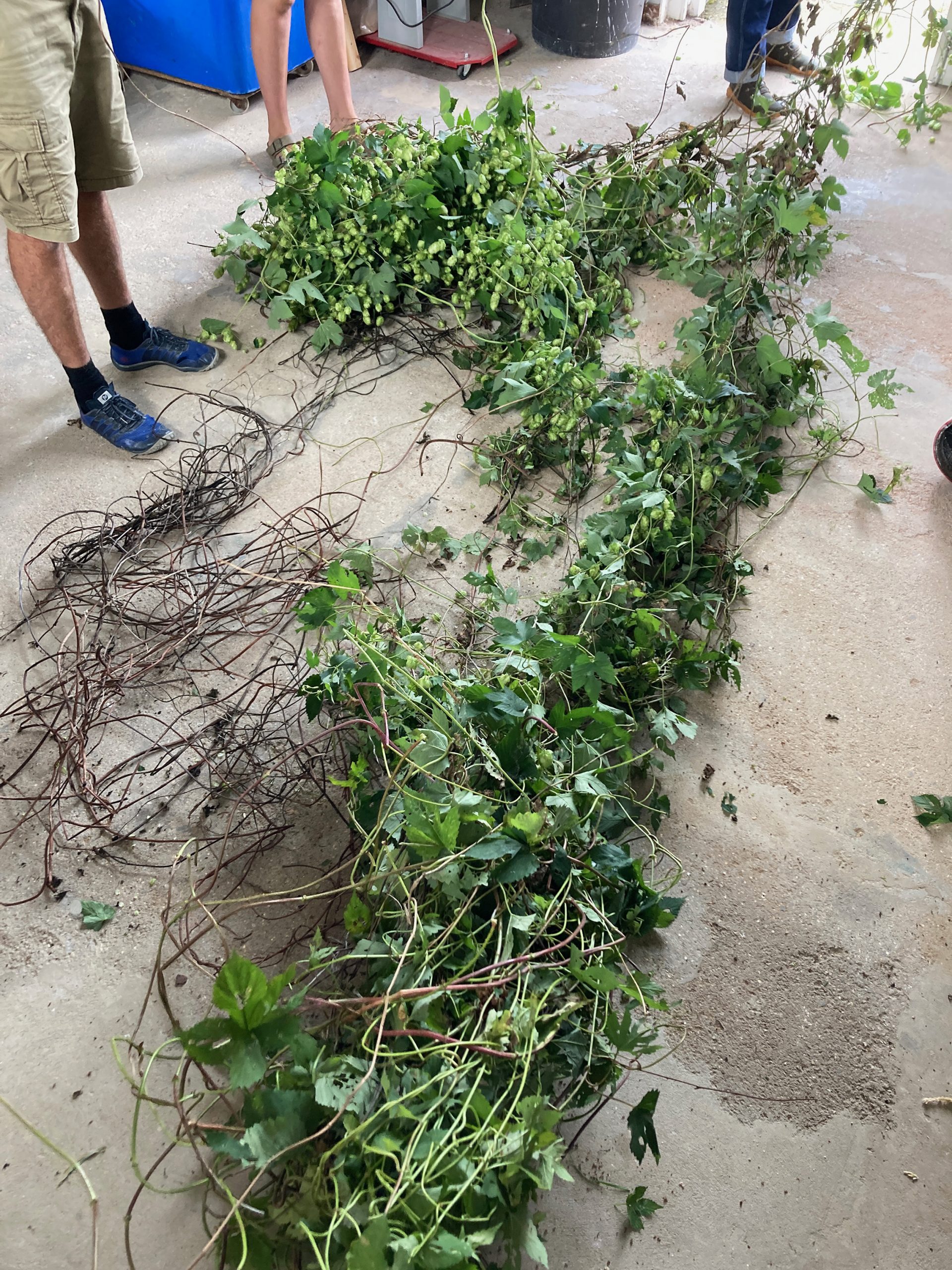
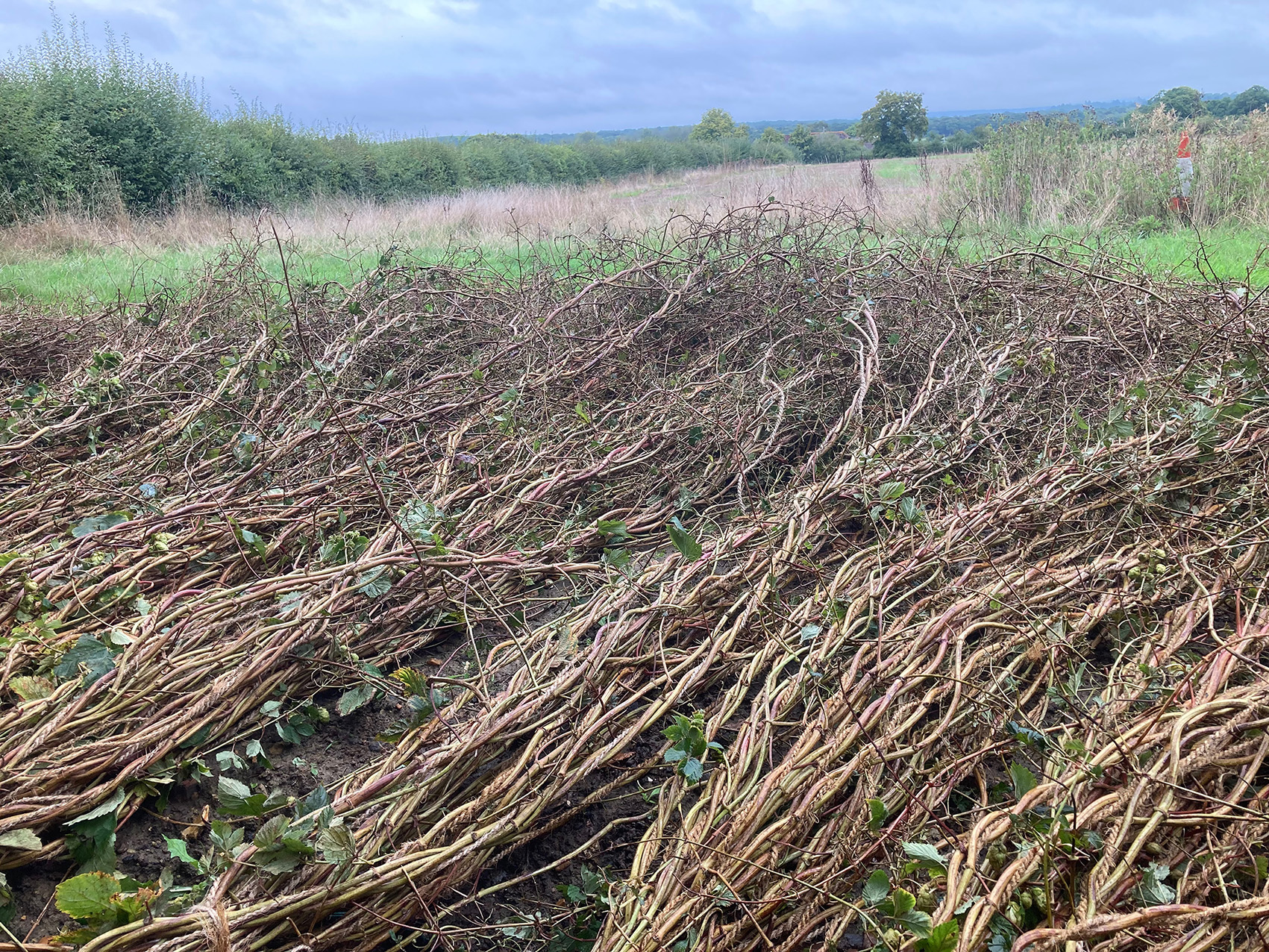
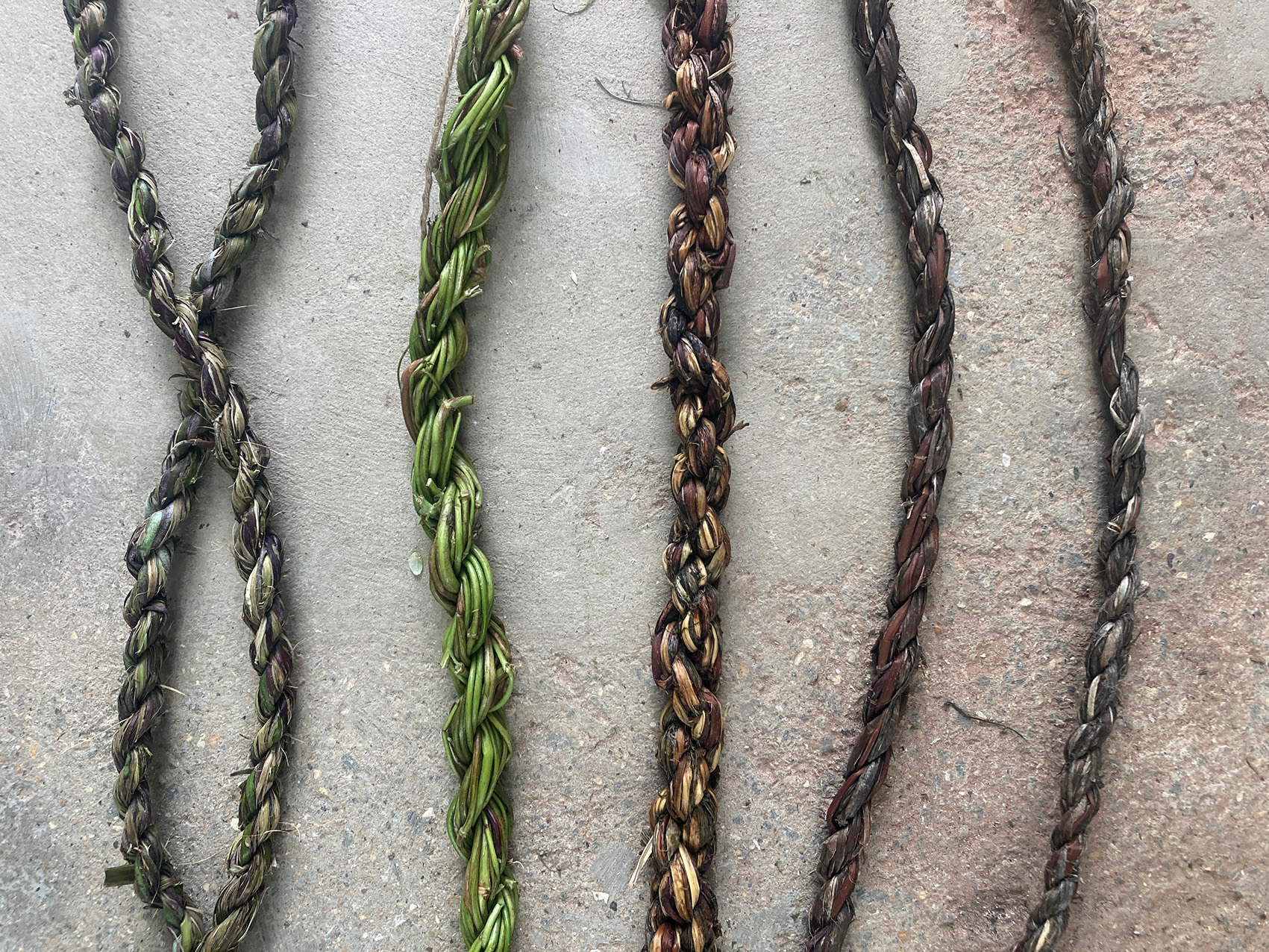
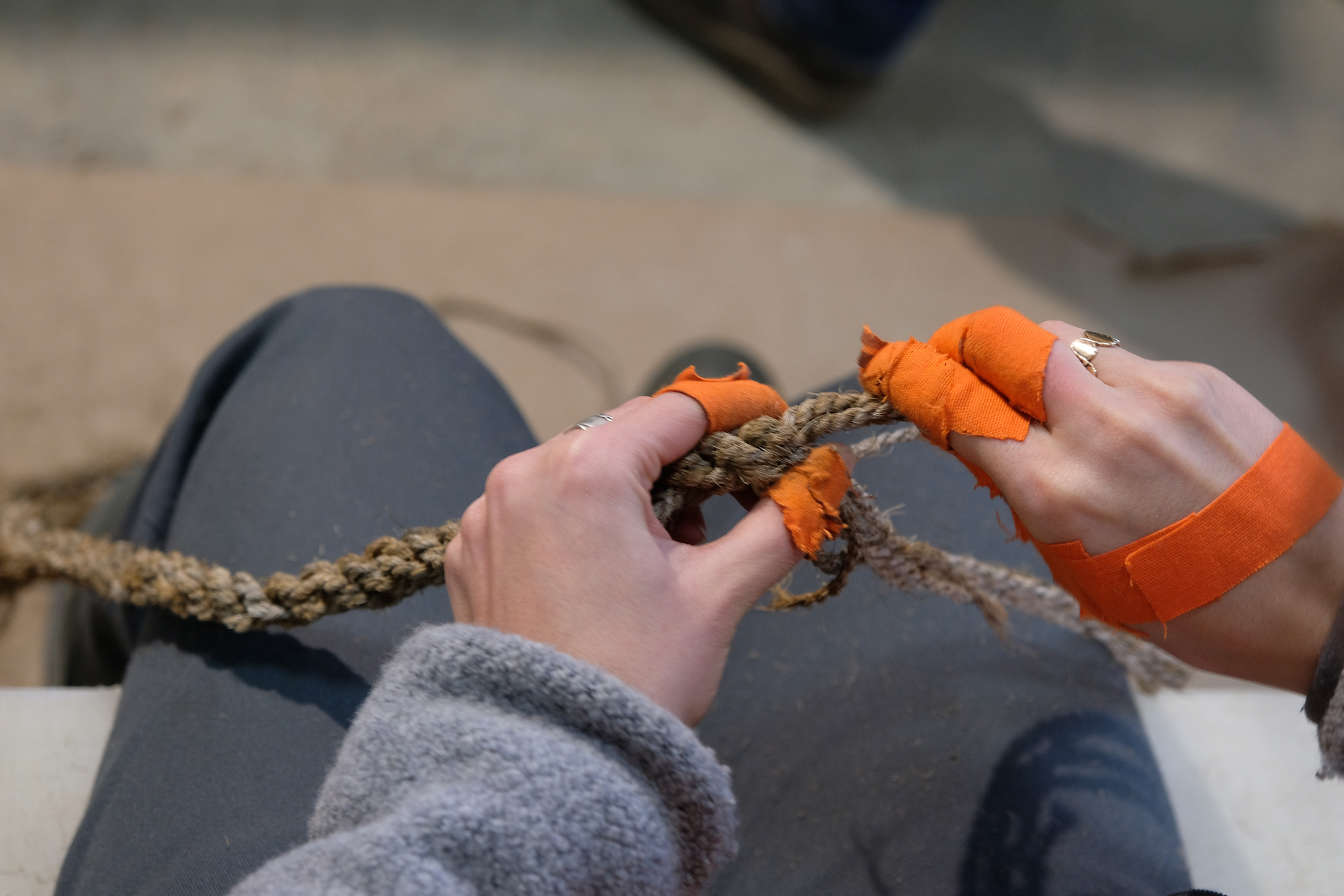

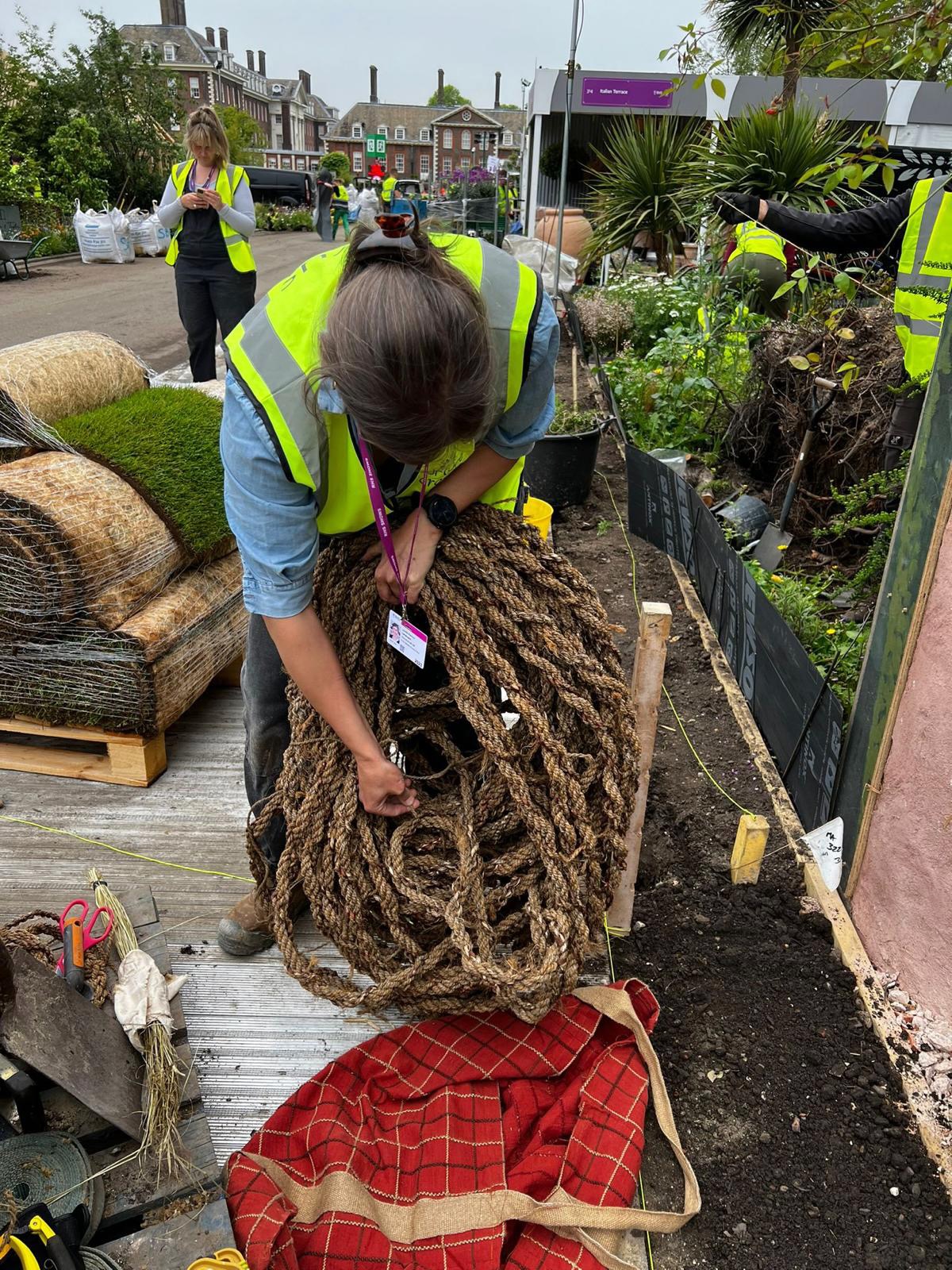
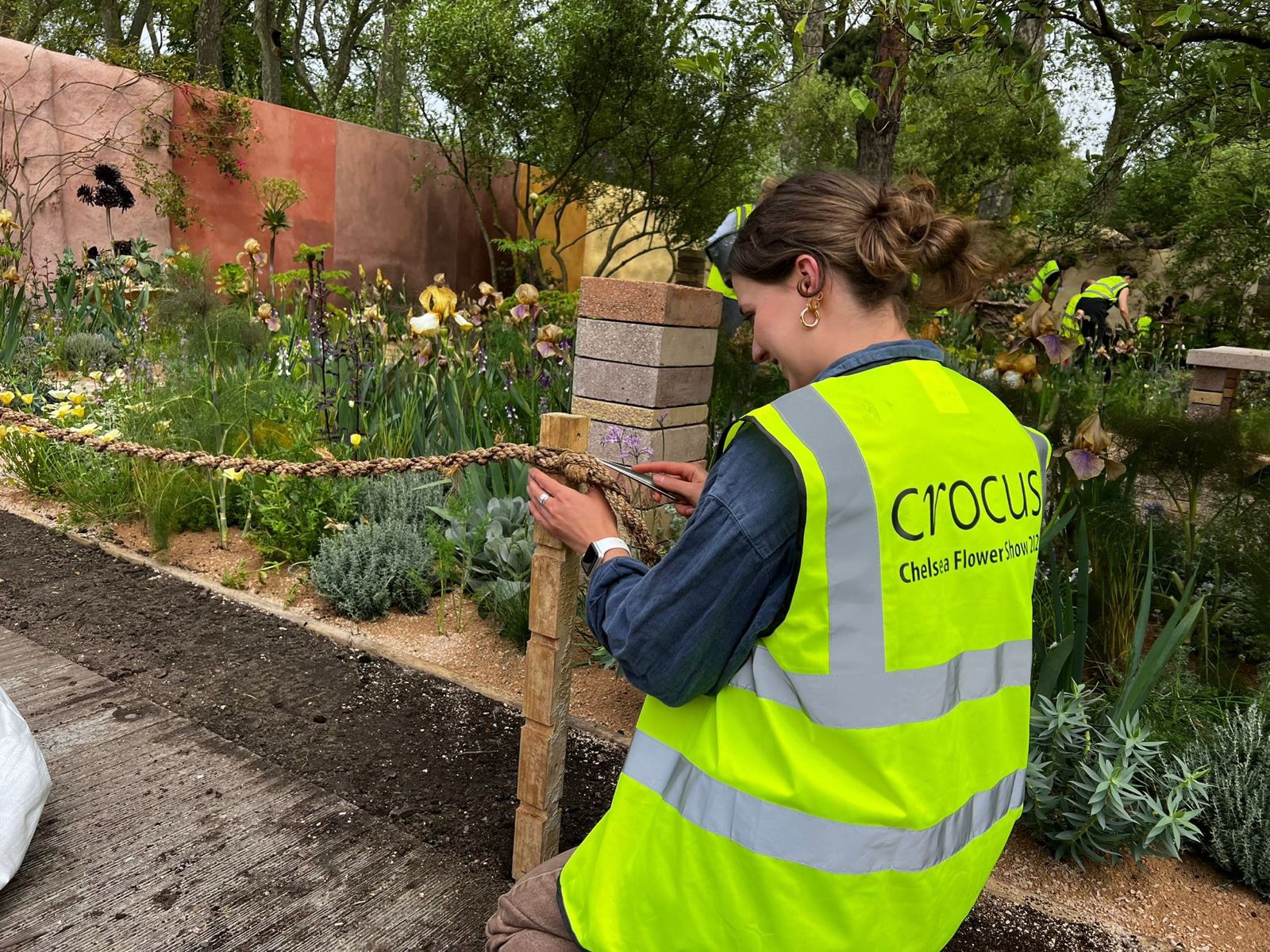
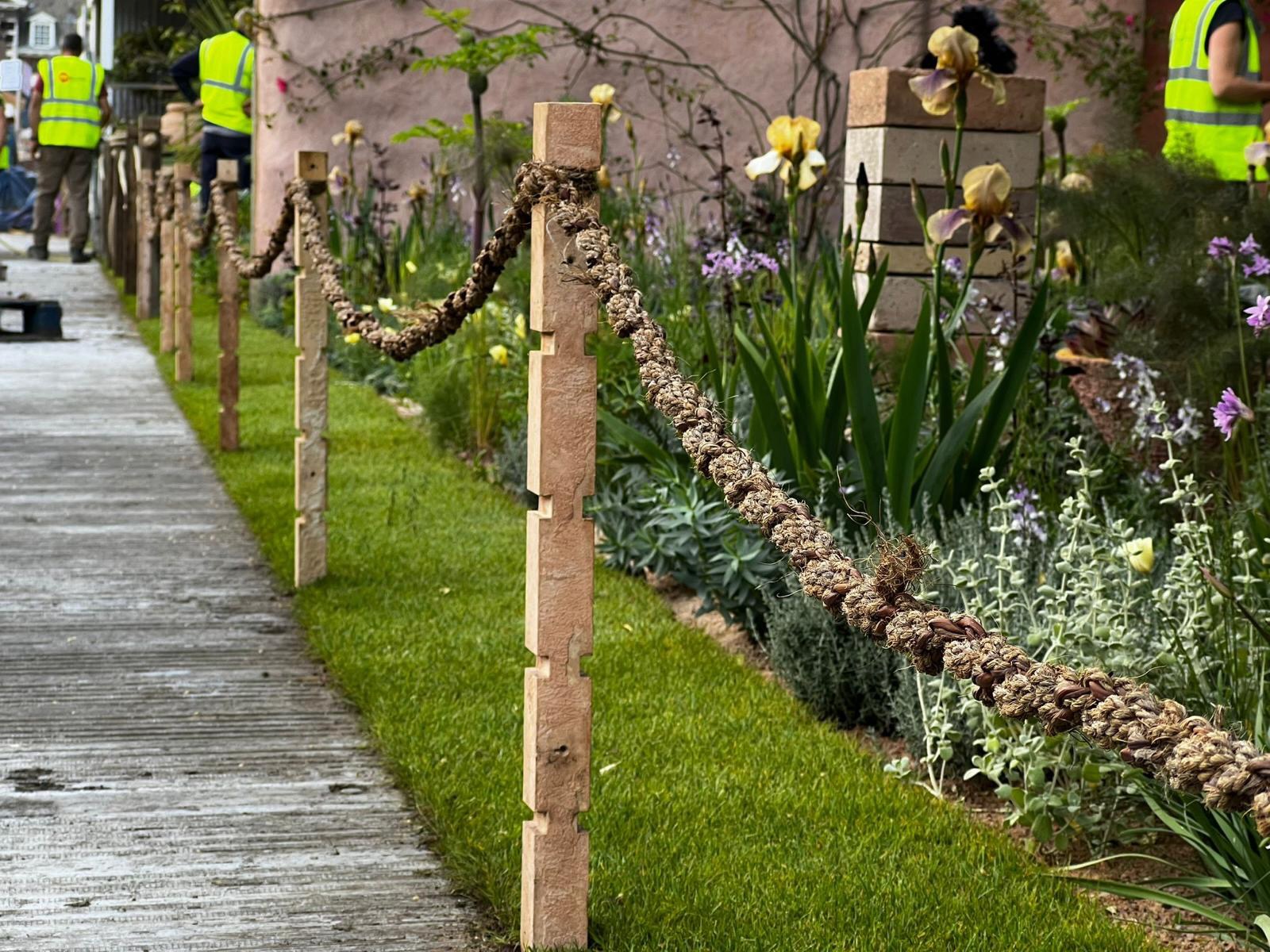
Paver bricks, semi-circular pavers, staked blocks and a table were made of a low-carbon concrete material designed and specified by Local Works Studio. We trained the contractors to make these features, using waste aggregates and a waste binder material, after prototyping and testing in our workshop.
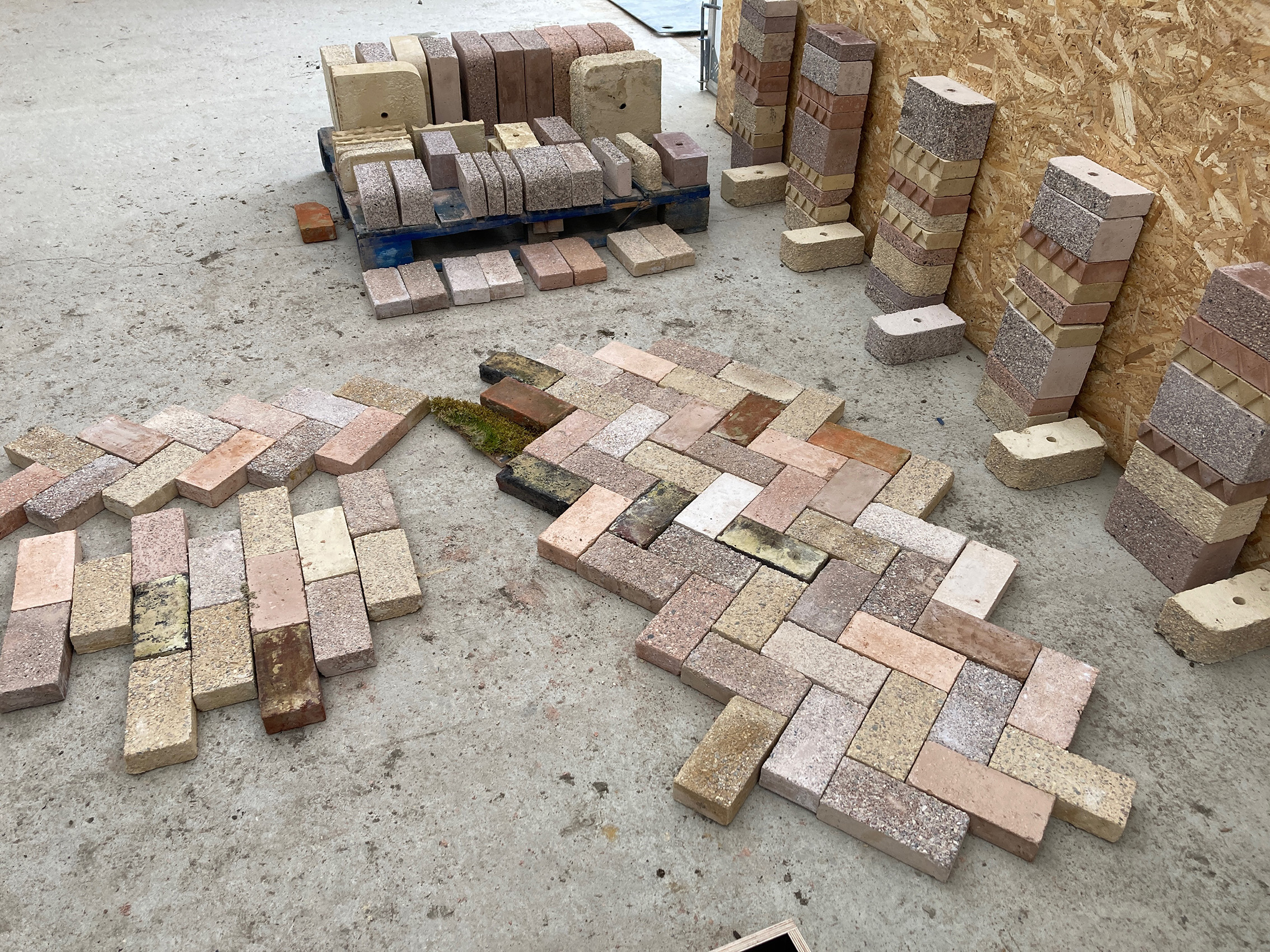
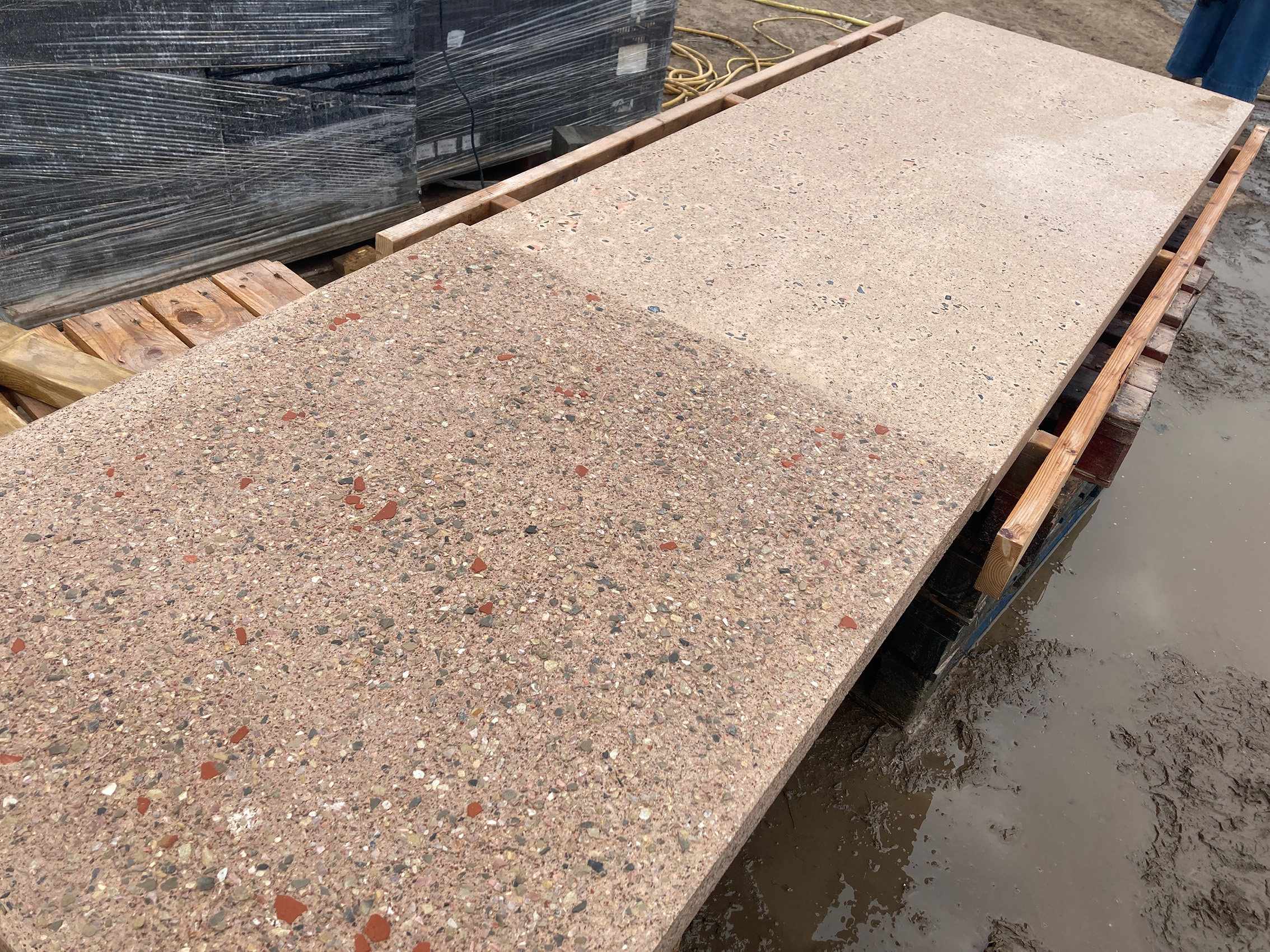
Large sections of the boundary walls were made with straw bales, fixed in place with Hazel rods, with lime render applied to their surface. They form solid, thick walls with subtle contours and soft ochre colours in the render. We prototyped the bale construction, cutting and ‘stitching’ the bales to form different shapes, before helping to build the walls at Chelsea.
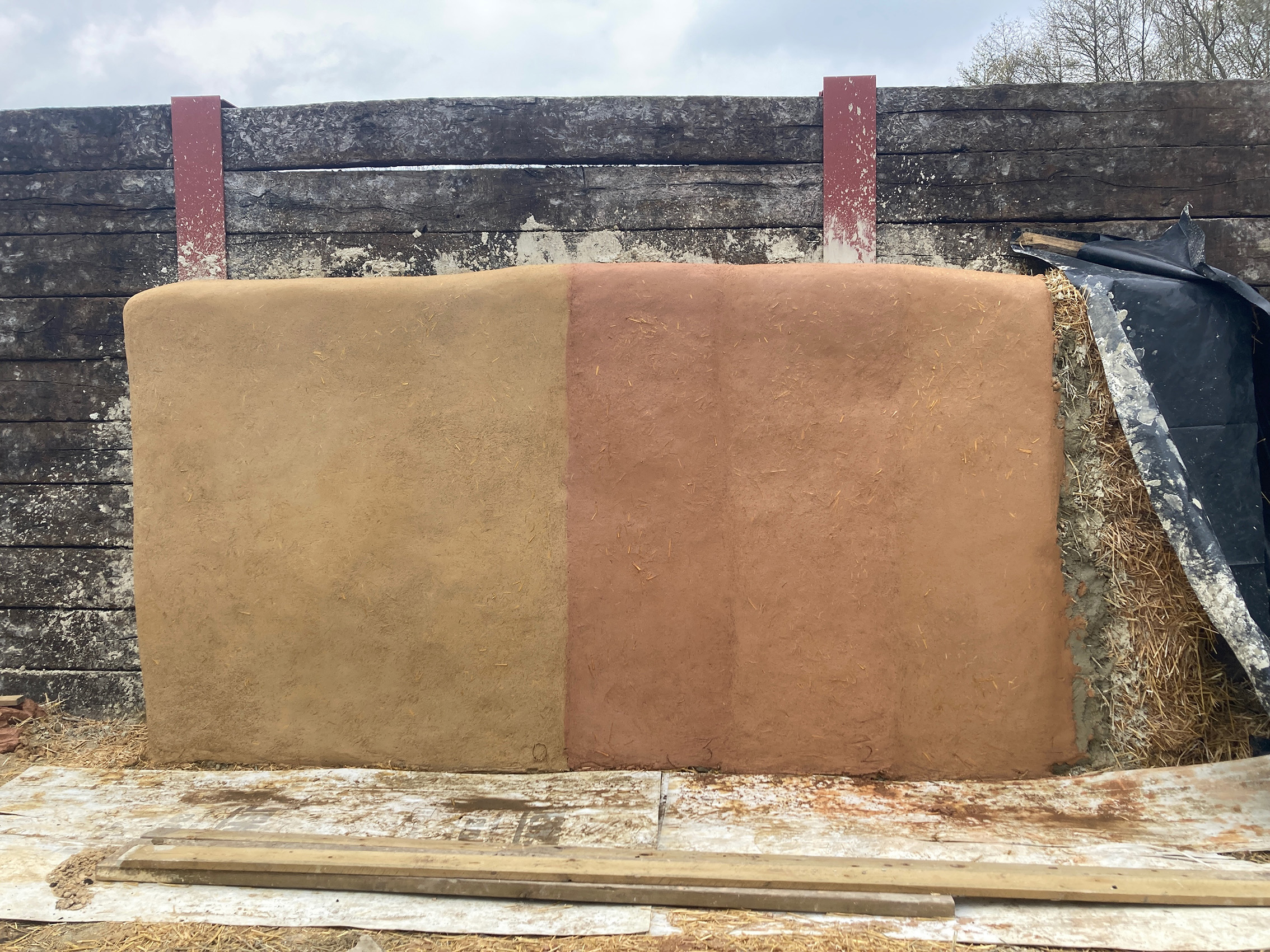
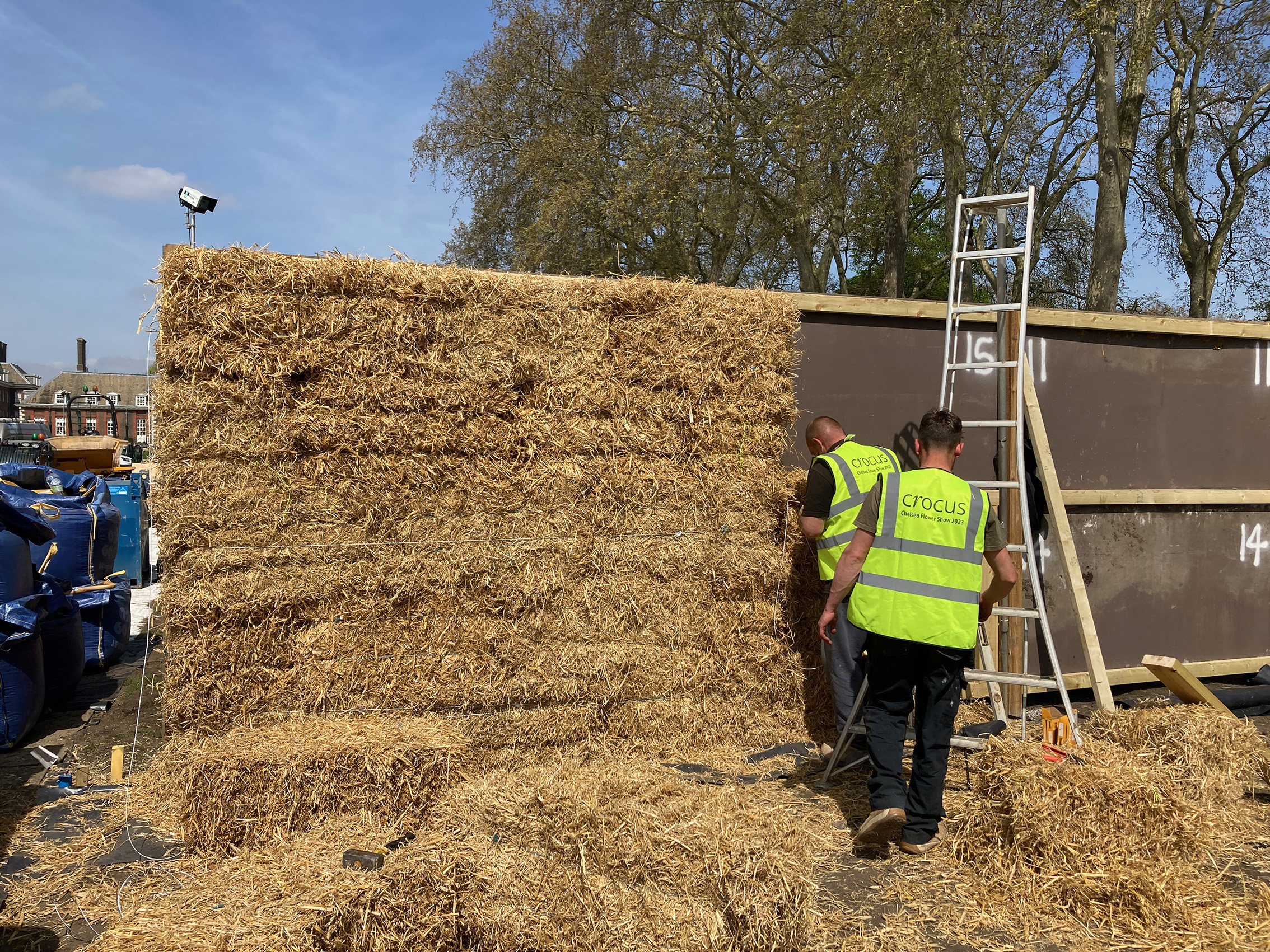
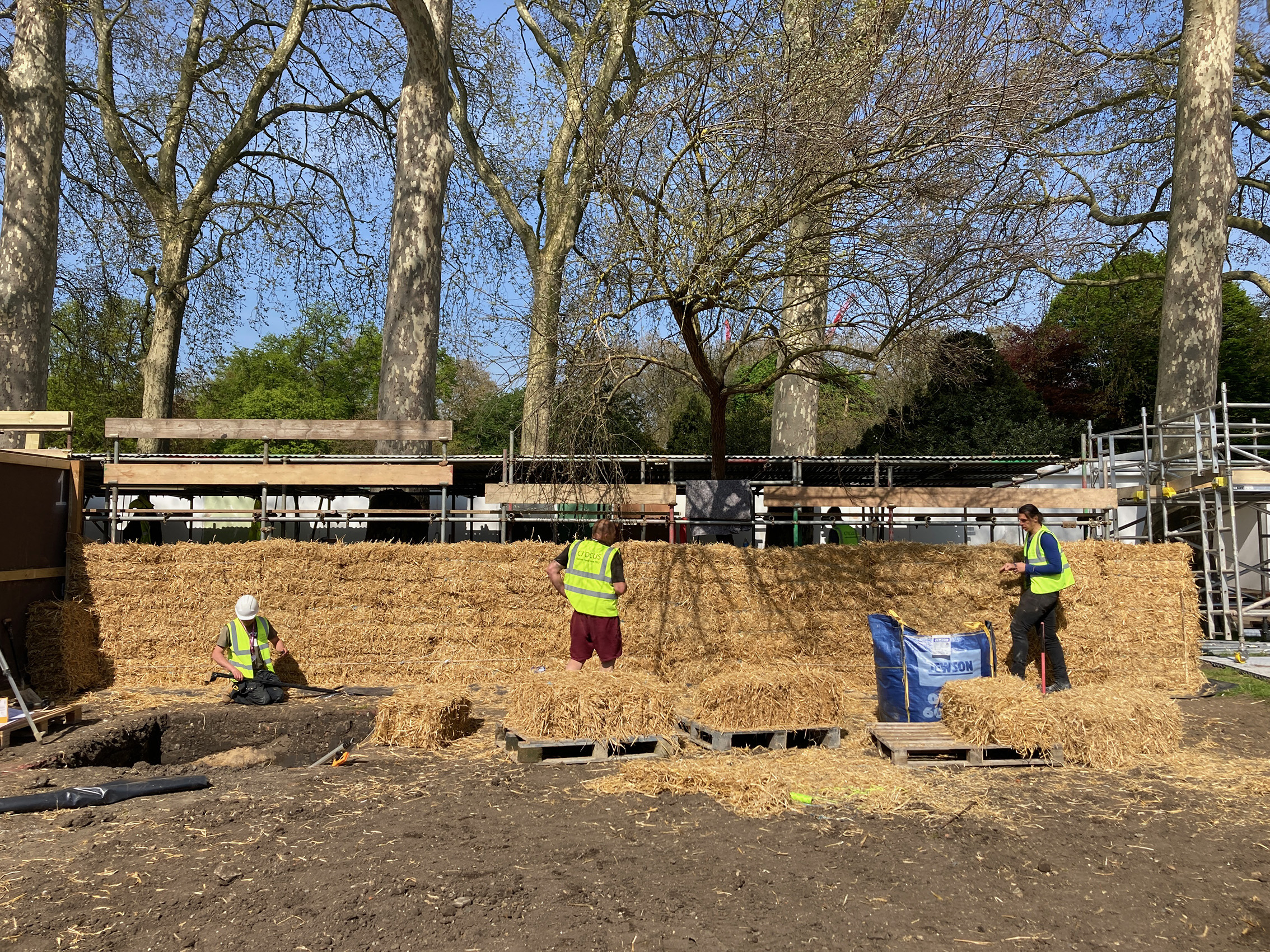
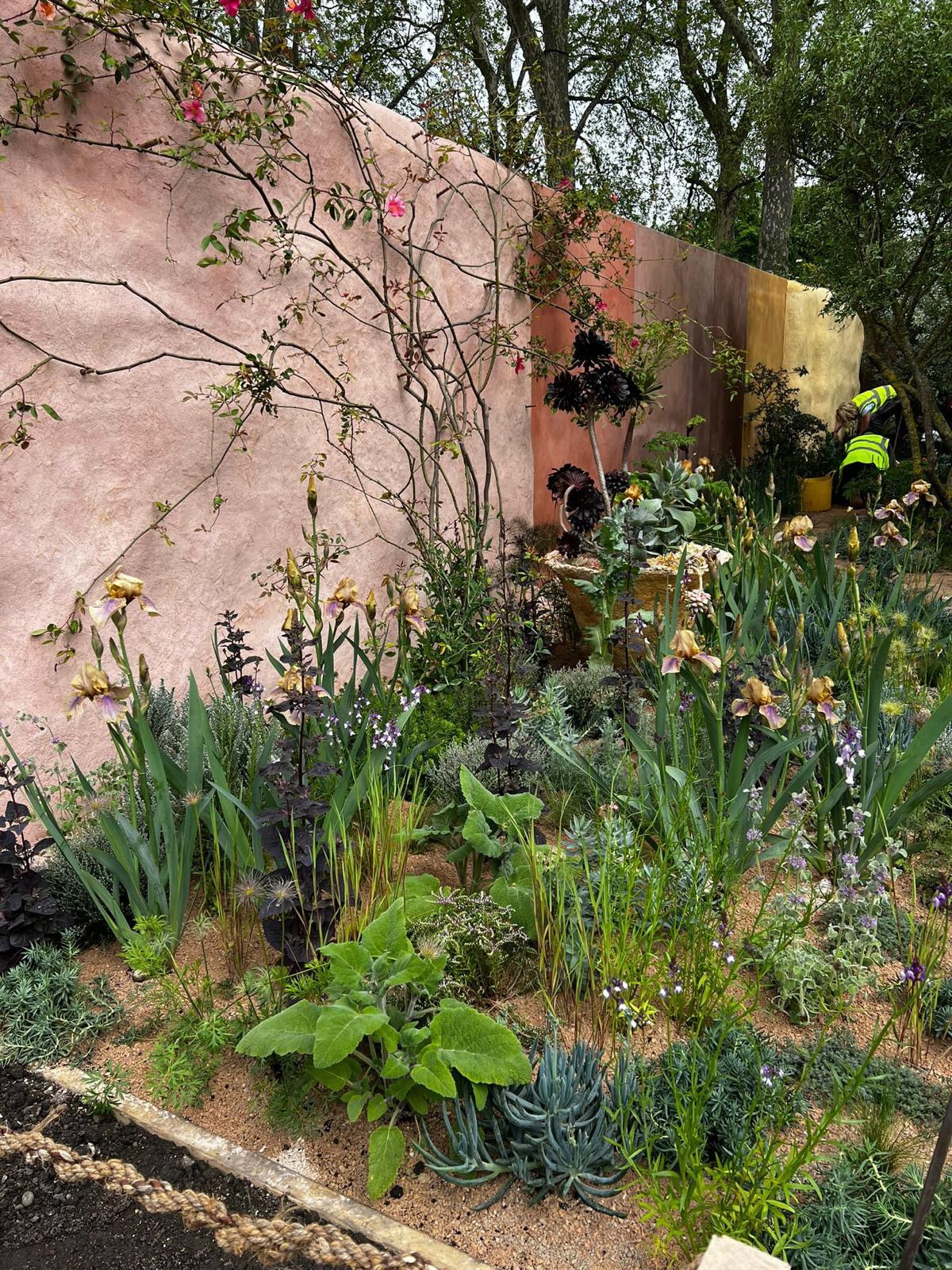
Designer: Sarah Price Landscapes
Contractor: Crocus & Mark Whyman
Sponsor: Nurture Landscapes
Material consultants & fabricators: Local Works Studio
Rendering: Guy Valentine